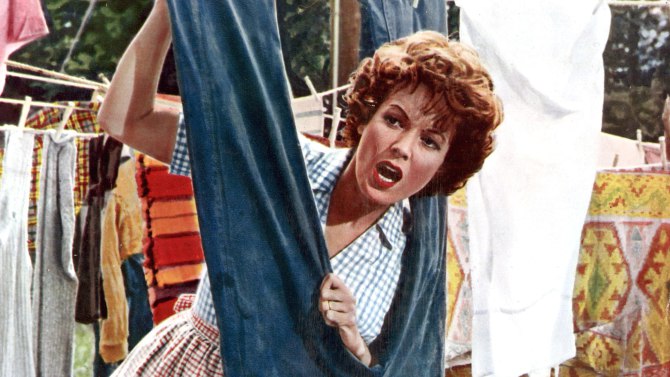
Camel Dagan
Maureen O'Hara, known for her screen pairings with John Wayne in the films of John Ford and one of the last A-list survivors of Hollywood's golden age, died on Saturday at home in Boise, Idaho. She was 95.
O'Hara also played Natalie Wood's mother in Christmas classic "Miracle on 34th Street."
A generation after her classic-era film career, O'Hara appeared in director Chris Columbus' 1991 John Candy film "Only the Lonely" as the mother of Candy's character.
The gorgeous Irish actress was often described as "fiery" and was nicknamed "Big Red" both because of her signature red hair and a certain temperamental streak in her characters, exemplified by her Mary Kate Danaher in 1952 Ford classic "The Quiet Man."
Upon seeing her beautiful red hair and green eyes, RKO execs chose to make 1945's "The Spanish Main," in which O'Hara was to star with Paul Henreid, in Technicolor instead of black and white.
Charles Laughton began her movie career: While she was still a teen, he viewed a screen test she had made, and he and partner Erich Pommer signed her to a seven-year contract with their company, Mayflower Films.
She had small roles in a couple of English films made in 1938 but made her first significant bigscreen appearance in Alfred Hitchcock's Gothic actioner "Jamaica Inn," starring Laughton. In this film, the 18-year-old O'Hara already displayed the kind of self-possession and self-reliance that would be a trademark of her characters. Laughton was impressed and cast her as Esmerelda the next year in his towering classic "The Hunchback of Notre Dame," shot at RKO in Hollywood.
When WWII began and he realized lensing would no longer be possible in London, Laughton sold O'Hara's contract to RKO, which cast her in a trio of B pictures. She still seemed somewhat uncertain of herself in "Bill of Divorcement" and held her own in the Dorothy Arzner-directed oddity "Dance, Girl, Dance," a proto-feminist film in which she starred with Lucille Ball, while "They Met in Argentina" was a musical trifle.
Director John Ford lifted O'Hara out of low-budget territory when he cast her in 1941's "How Green Was My Valley," which won the Oscar for best picture. The image of O'Hara radiantly waving from a gate is one of the enduring images in the film and has been used in an untold number of movie montages.
During WWII she made several films, several of them war pics in which she was just the obligatory female interest, but she shined in a couple of movies: In the excellent 1942 Technicolor swashbuckler "The Black Swan," she is gloriously outraged by the attentions of scoundrel Tyrone Power; in John Garfield psychological thriller "The Fallen Sparrow" (1943), she is a strong, elegant lady in jeopardy.
("The Black Swan" would be the first of a number of pirate pics she made over the next decade, including "The Spanish Main," with Paul Henreid; "Sinbad the Sailor," with Douglas Fairbanks Jr.; "At Sword's Point," in which she got the opportunity to wield her own blade as the daughter of a musketeer; and "Against All Flags," with Errol Flynn, in which her character, a female pirate, got to engage in her share of the swordplay.
In 1947 she made "Miracle on 34th Street"; while without doubt her most well-known film, the pic is something of an odd duck in her career as her character quickly transforms from hard-headed and skeptical to warmly sentimental.
In addition to the Westerns, the swashbucklers and the musicals, O'Hara even made a film noir, 1949's "A Woman's Secret," with Melvyn Douglas and Gloria Grahame.
During the 1950s she paired four times with director Ford. The first film was the Western "Rio Grande," a movie Ford agreed to make only if he could also do his dream project, "The Quiet Man." Both movies starred O'Hara and Wayne, but O'Hara had far more to do in the latter, proving she was Wayne's match in screen presence. Her character is prideful and fiercely stubborn, the emblematic O'Hara role. (And the part gave her one of her few onscreen opportunities to speak in her own Irish accent.) The third Ford film was "The Long Gray Line," reunited O'Hara with Power. Set at West Point, it nevertheless had a very Irish flavor. The final Ford film, reuniting Wayne and O'Hara, was 1957 biopic "The Wings of Eagles," about a Navy pilot-turned-screenwriter.
O'Hara and Wayne, however, would work together again in 1963 Western comedy "McLintock!" and 1971 Western "Big Jake."

